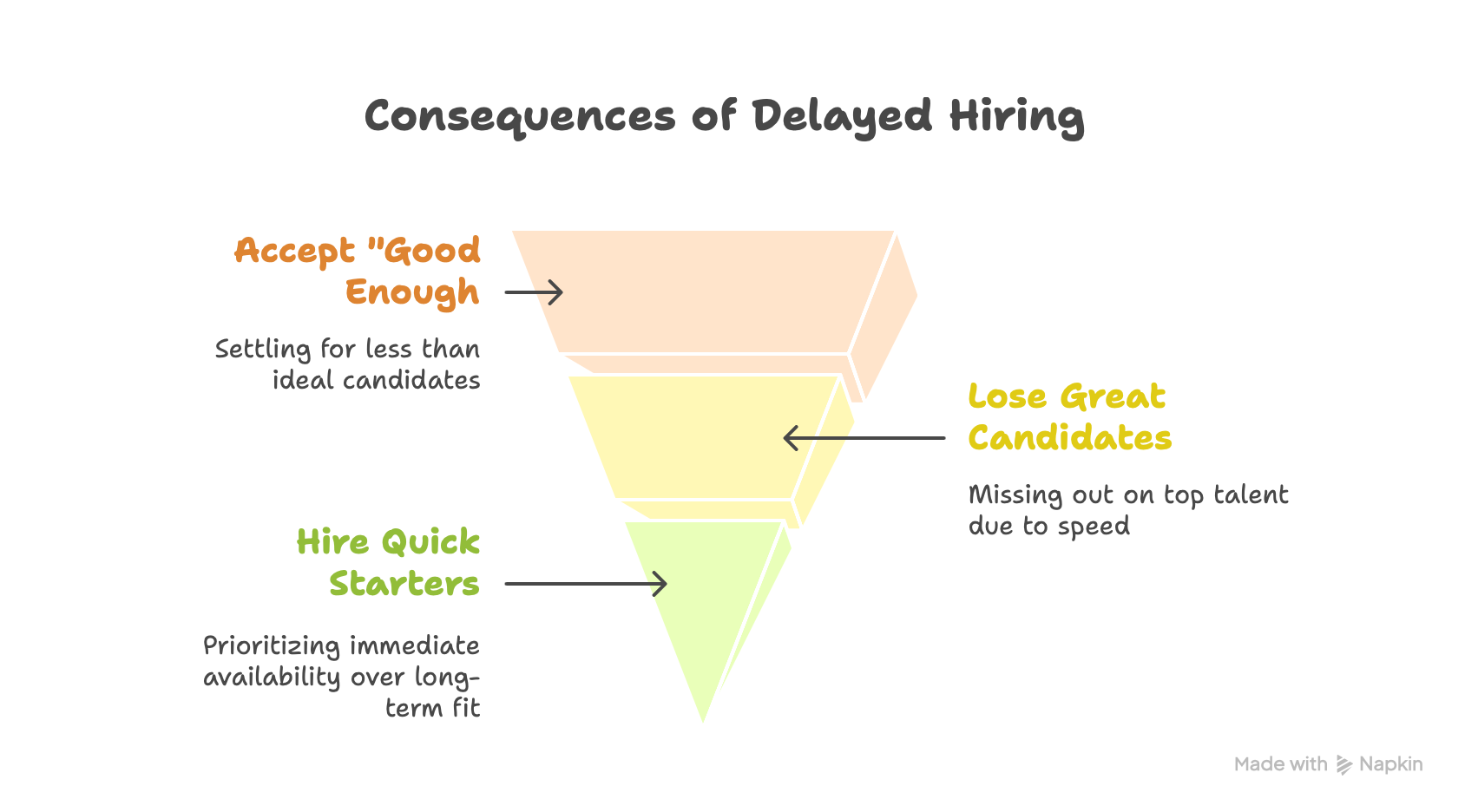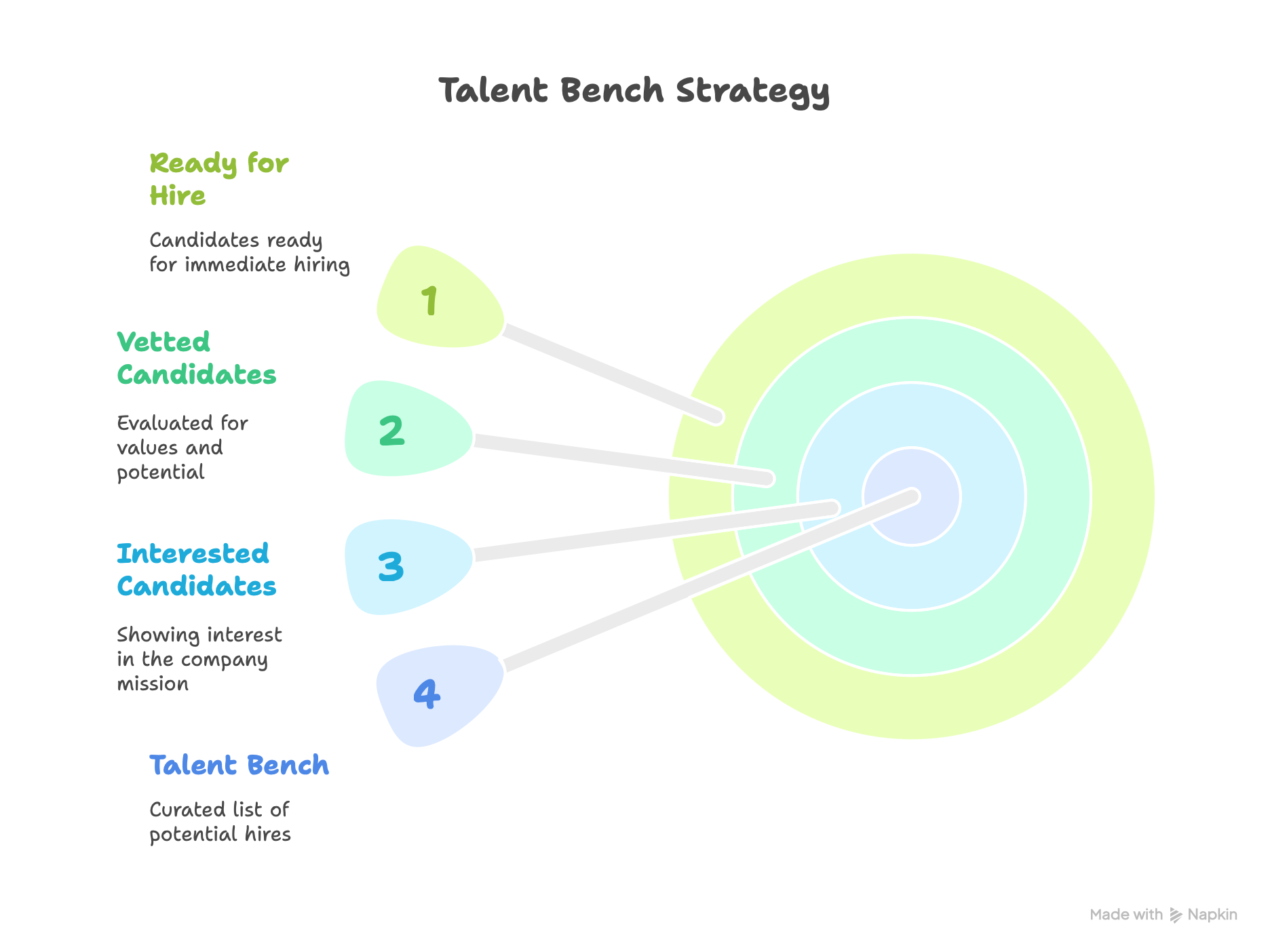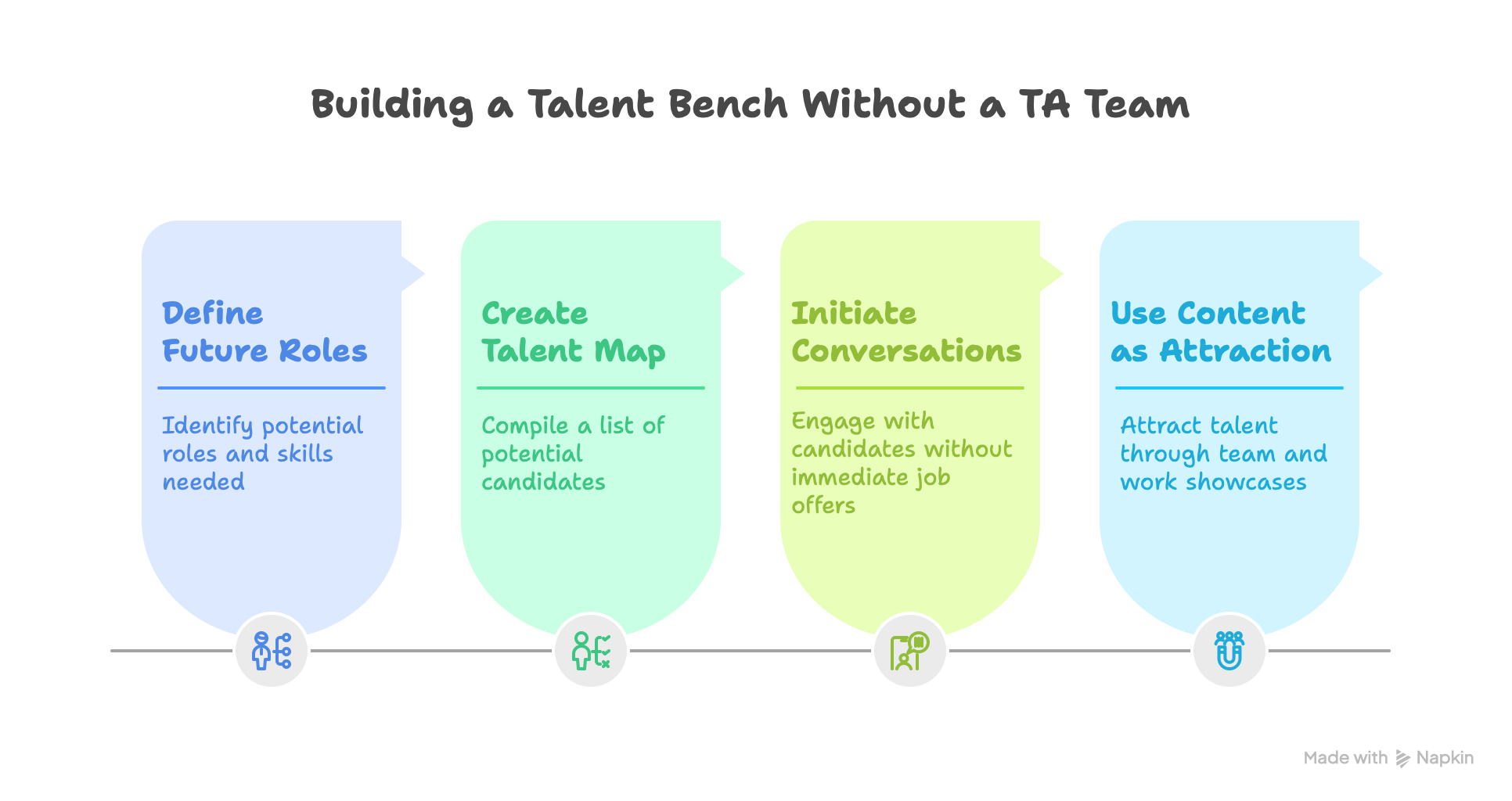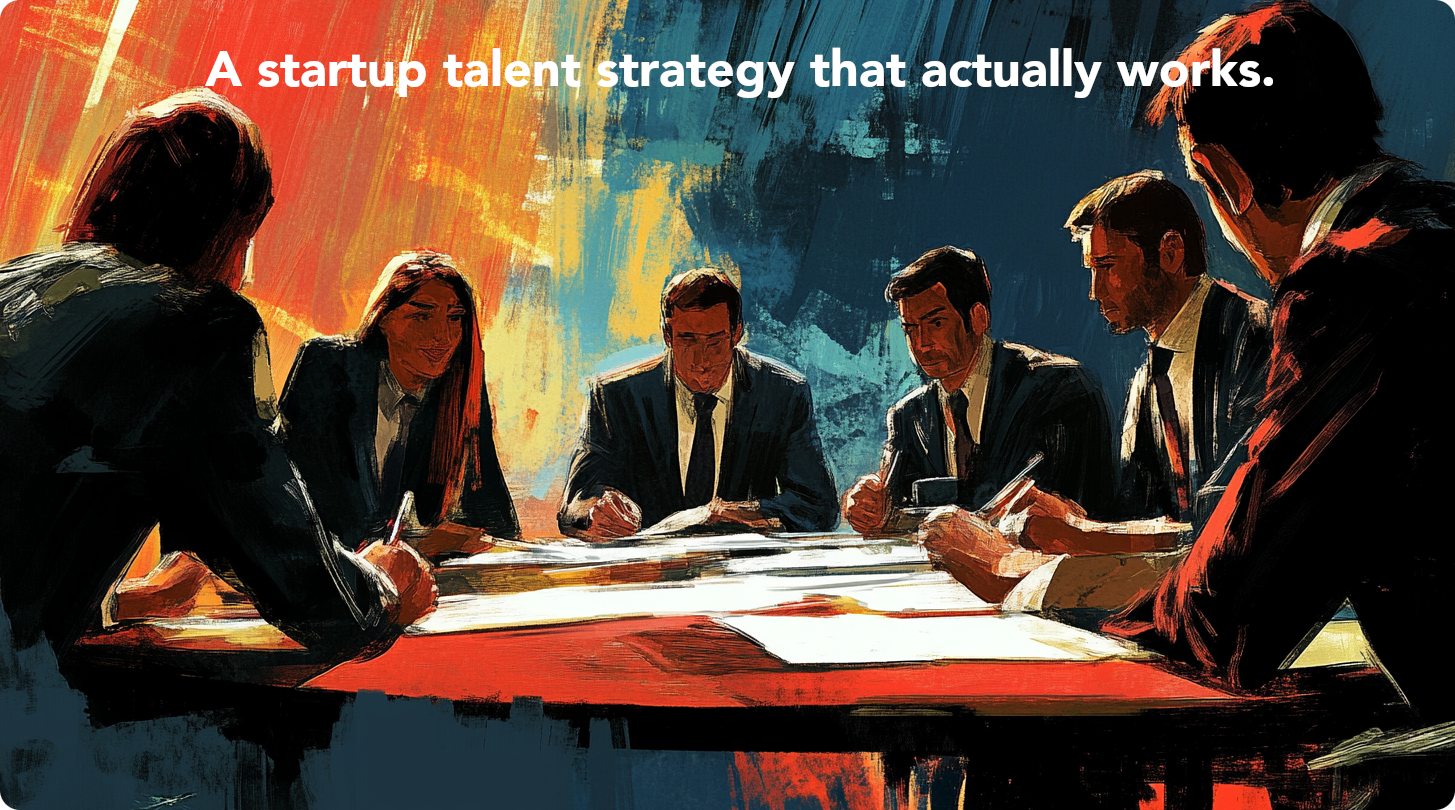🧱 How to Build a Talent Bench Before You Need It
Startups scale faster when they stop hiring reactively.
In early-stage companies, most hiring is driven by urgency: a product launch, a funding milestone, or someone quitting. That’s when founders scramble — and scramble leads to compromise.
But the companies that win talent in 2025?
They don’t just react. They build a bench.
This article explains how.
🚩 The Problem: Hiring Only When You’re in Pain
When you start hiring after the need becomes critical, three things happen:

- You accept “good enough” instead of “right fit.”
- You lose great candidates because your process is rushed.
- You hire people who can start quickly — not necessarily those who’ll thrive.
It’s like recruiting a football team after the season starts. Too late.
🔍 What Is a Talent Bench (and Why You Need One)
A talent bench is a curated list of high-potential people you’d love to hire — not now, but soon.

They’re:
- Warm, informed, and interested in your mission
- Vetted for values, aptitude, and trajectory
- Ready to be hired when the time is right
Think of it as precision hiring on standby — and it’s how top companies reduce time-to-fill from 90 days to 2 weeks.
👉 Related: Mastering A-Player Talent Acquisition
🧠 What Founders Get Wrong
Myth 1: “If I don’t have headcount now, it’s a waste of time.”
False. You're not interviewing to hire — you're interviewing to learn and build trust.
Myth 2: “I can’t reach out without a live role.”
Also false. You can share your vision, learn from candidates, and make the next round of hiring smoother.
Myth 3: “Bench = database of LinkedIn profiles.”
Nope. A real bench is relational, not transactional. You don’t “source” it — you nurture it.

🛠 How to Build Your Bench (Even With No TA Team)

1. Define Your Likely Future Roles
Even if rough — think 3–6 months ahead:
- Who might you hire next?
- What skills or experiences will unlock growth?
- Where do current team limits show?
Capture themes — not just titles.
2. Create a Running Talent Map
Keep a private doc (Airtable, Notion, CRM) of:
- Standout candidates from past roles or rejections
- Warm referrals from your network
- Passive outreach from LinkedIn or events
Mark interest level, seniority, skill domain, and when to re-engage.
3. Start Conversations Without Pitching a Role
Say:
“We’re not hiring for X just yet, but I’d love to learn from you — and keep the door open for when we do.”
This builds signal without pressure.
4. Use Content as an Attraction Tool
Publishing what your team is building, how you work, and who you’re looking for helps attract talent to your bench — without a job post.
🧩 Bonus Tip: Ask “Who Should I Talk To?”
At the end of every hiring process, ask:
“If you weren’t interested right now — who’s the best person I should talk to for this role?”
Great people know great people. Let your network fill your bench.
🧠 Final Thought
Startups that wait to hire are always behind.
Startups that build a bench win faster, cheaper, and with far fewer mis-hires — because they move with clarity, not chaos.
This isn’t about volume. It’s about precision, relationships, and readiness.
🟢 Want help building your bench before it’s too late?
